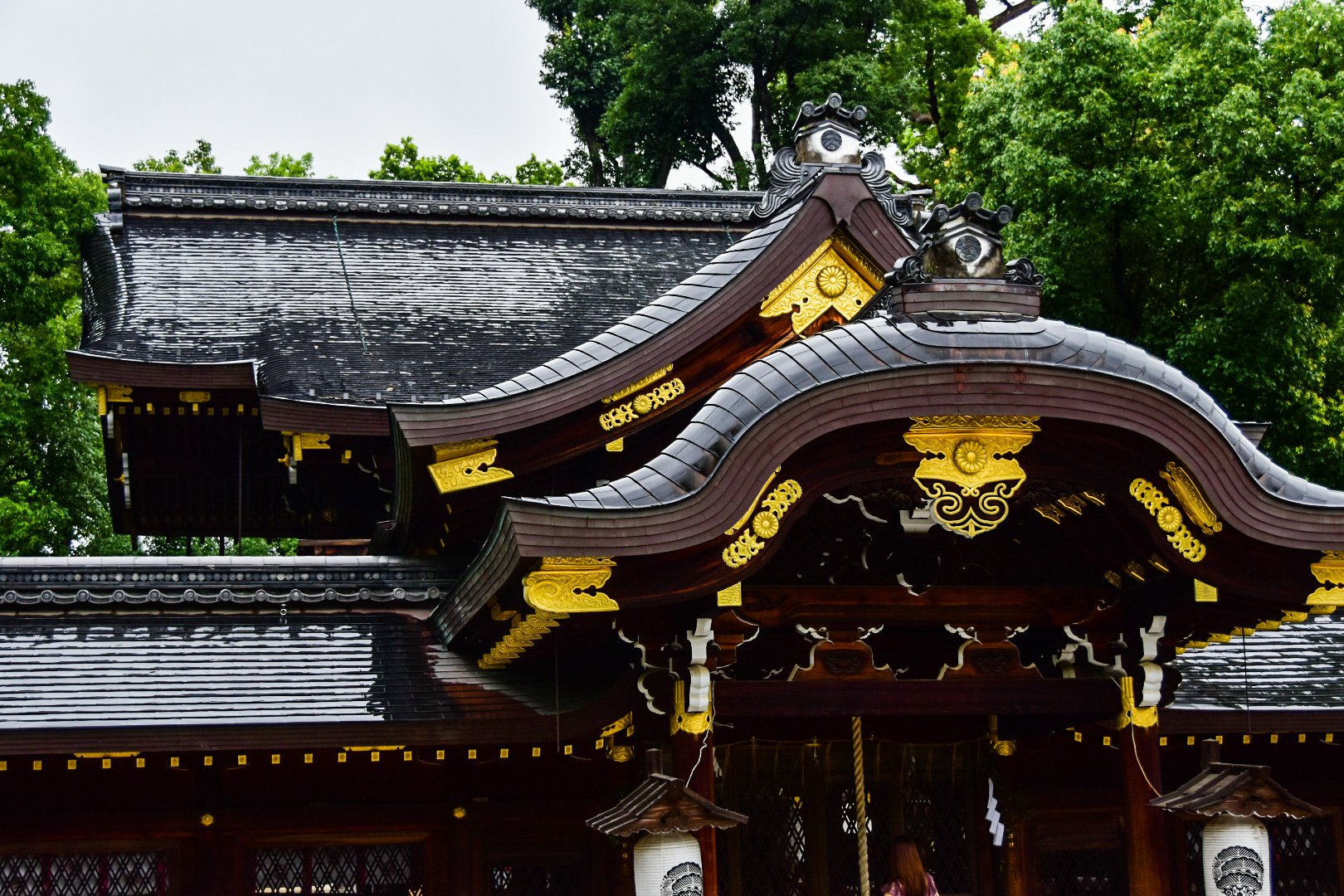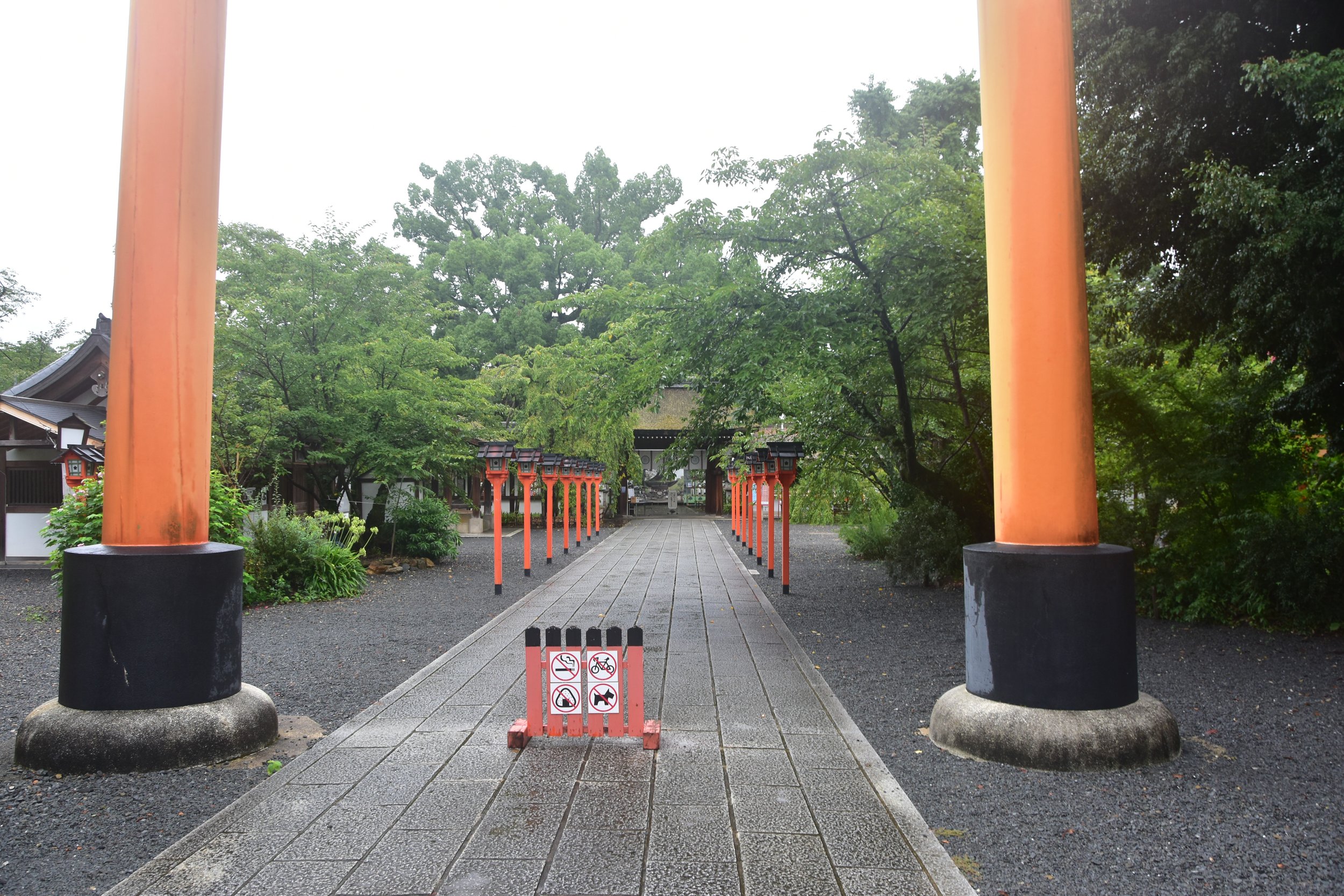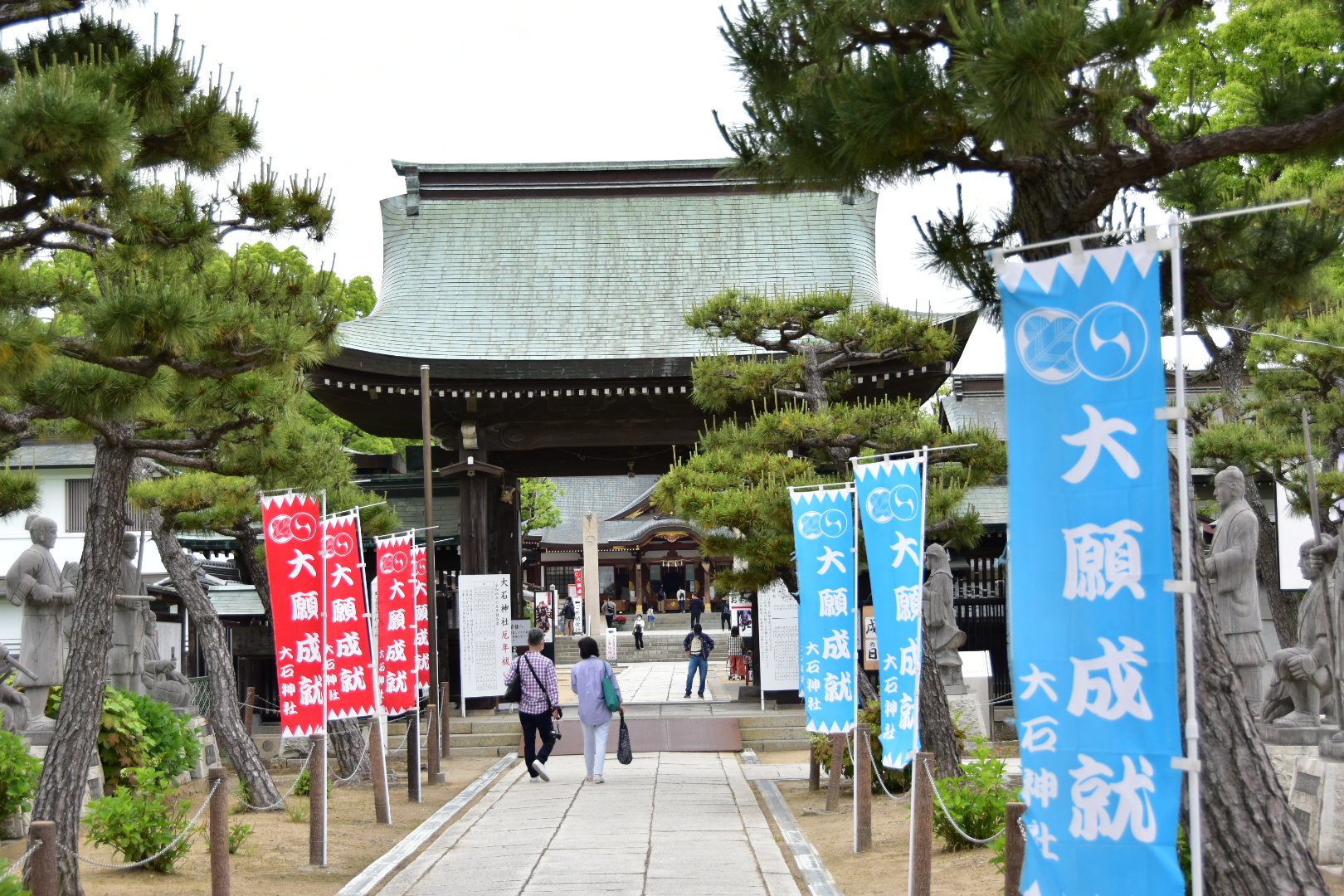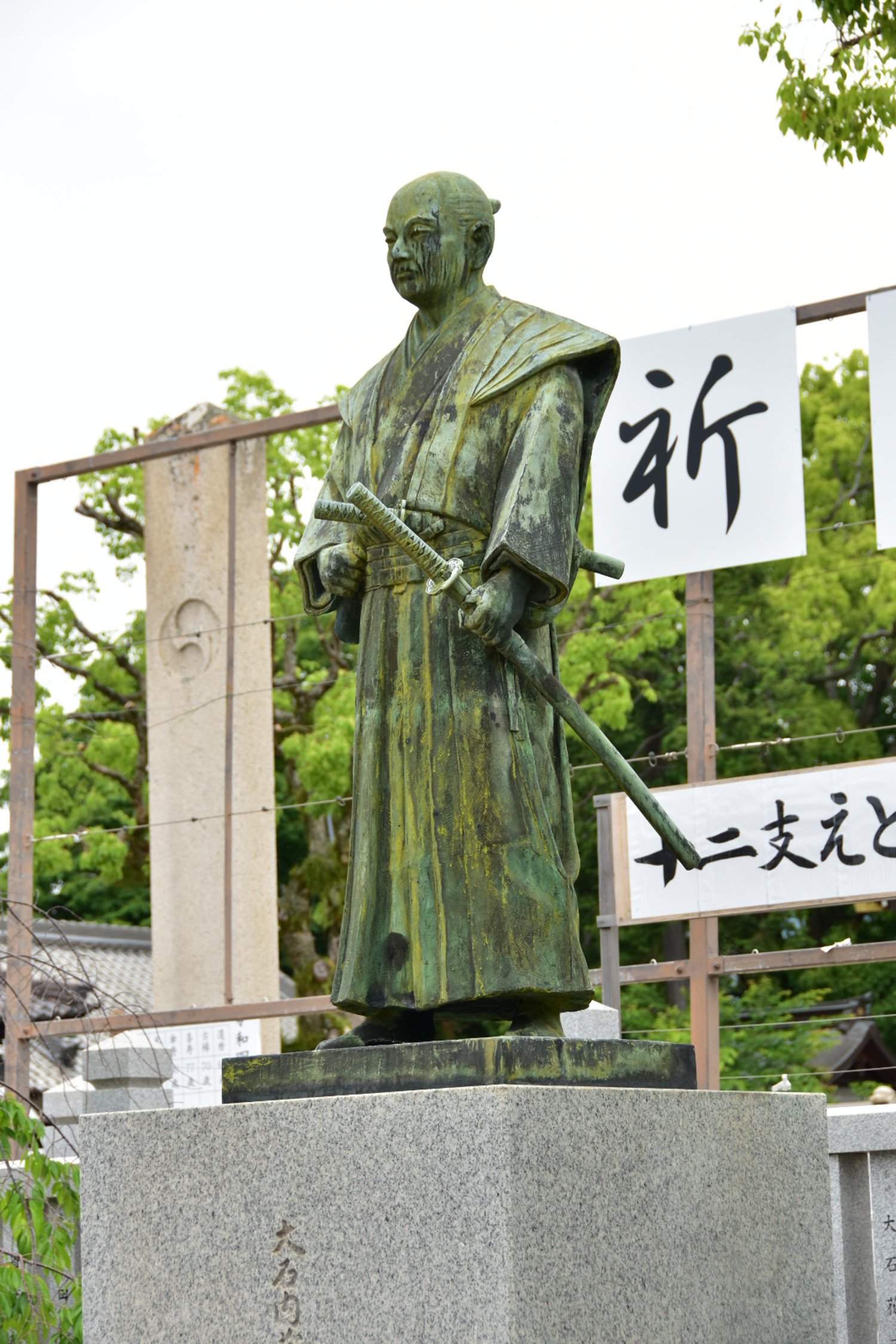Imamiya Jinja
Imamiya Jinja is an old shrine just north east of Kinkakuji in northern Kyoto. Though the shrine’s founding has no official date, it was noted that the shrine was standing before the imperial capital moved to Kyoto (Heian-kyô) in 794 C.E. Imamiya Jinja is a shrine that specialized in granting wishes regarding good health and recovering from illness, and several satellite shrines that bring good luck to the traditional silk weaving community that still weave in the surrounding neighborhood.
For the casual: 7. For the educated: 4.
I have to say, I was surprised that I didn’t know about this shrine when I first visited Kyoto in 2015. I had done my research for temples and shrines in the area, and I was certainly nearby to see Kinkakuji, but I never knew about this hidden beauty in the quieter streets of the city. I know it’s a cliché to say it’s a hidden beauty, but it really is. Dark wooden buildings with slate gray roof tiles, fitted with gleeming gold ornamentation, and secluded in a forest of trees and bamboo, I am so glad that I found this little hideaway. Just another example of what you can find in Kyoto the more often you visit.










